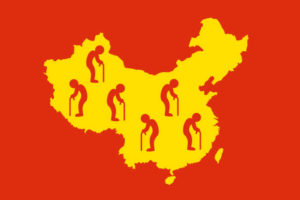Just as China seems poised to inherit global leadership, it’s facing a massive demographic challenge—it has too many old people. China’s long-running one-child policy achieved its goal and turned China’s population charts into an upside-down pyramid, with a small young population, and a large older population. Now the results are catching up to the Middle Kingdom. Elanor Olcott reports in the Financial Times:
China’s president Xi Jinping is poised to secure an unprecedented third term as leader at a congress of his Communist party this month, but behind the political theatre a broader shift is playing out.
Demographers predict the world’s most populous country will start to shrink in 2022, a turning point with profound ramifications for its future.
“That China’s population decline has coincided with the start of Xi’s third term is symbolically and practically significant,” said Wang Feng, an expert on Chinese demographic change at the University of California, Irvine.
While Xi is clearly in the political ascendancy, the economic tools at his disposal are increasingly constrained by a property sector meltdown, the damage to consumer confidence caused by successive coronavirus lockdowns, and local government fiscal shortfalls.
The rapid ageing of China’s population — a process that will accelerate during Xi’s third term — will further chip away at Beijing’s powers to stimulate growth and manage economic crises.
Over the next five years, the first cohort of people who became parents during the “one-child policy” era that began in 1980 will increasingly advance from their 60s and 70s — or what sociologists describe as being “young-old” — into their 80s.
Wang said this growing group of “old-old”, with a higher likelihood of developing costly chronic diseases, would make greater care demands both on their children and the state.
Read more here.

